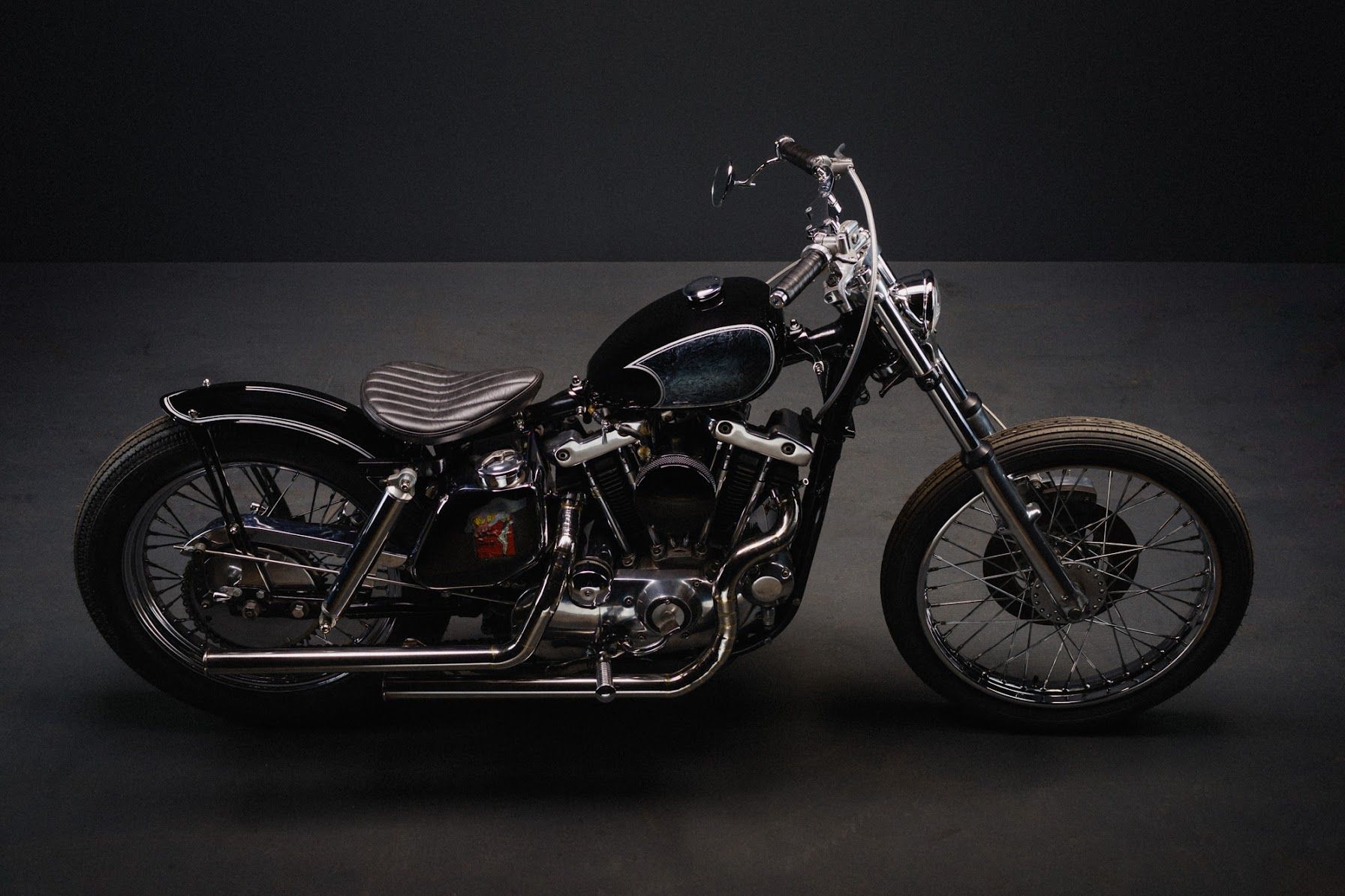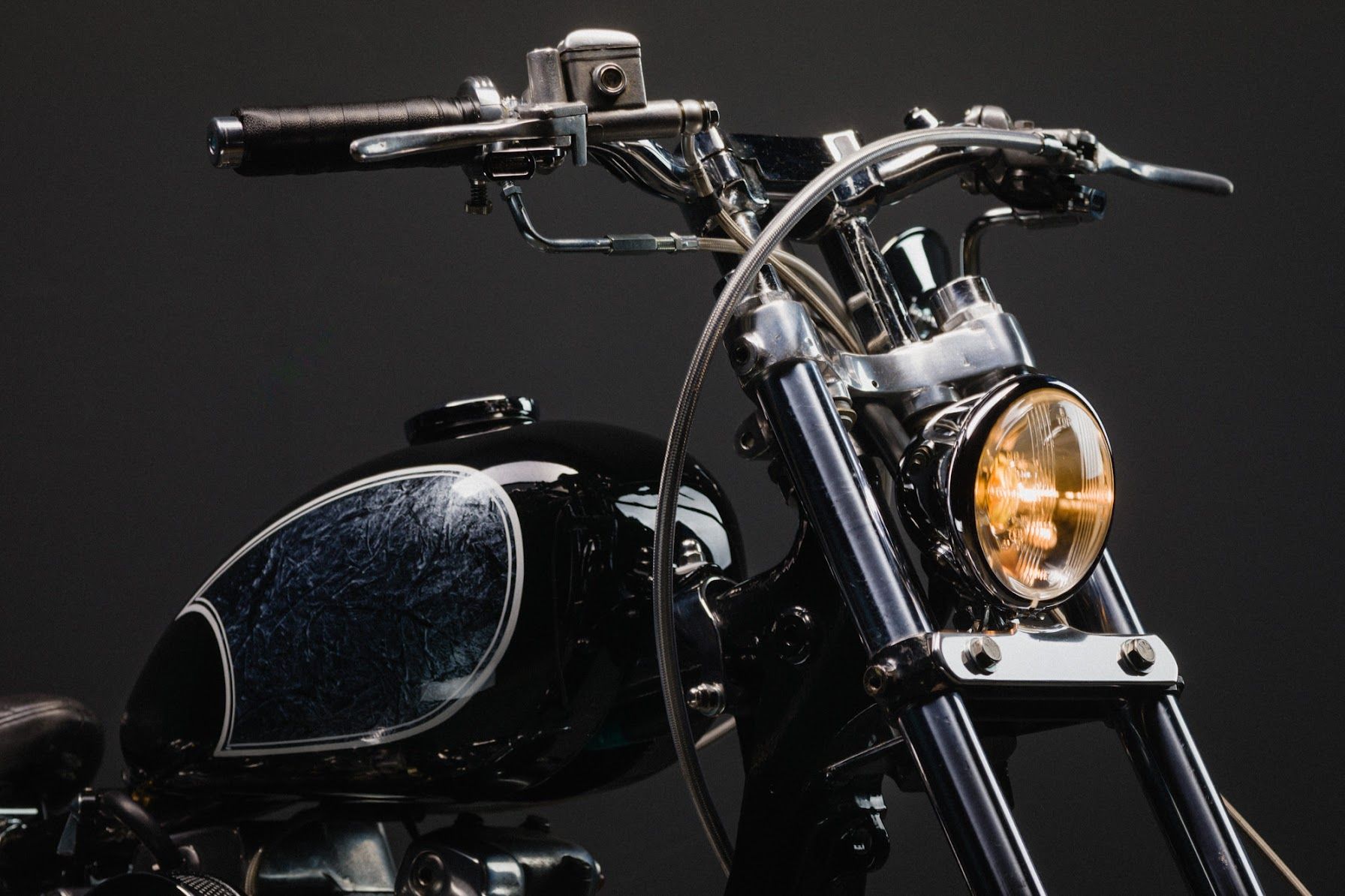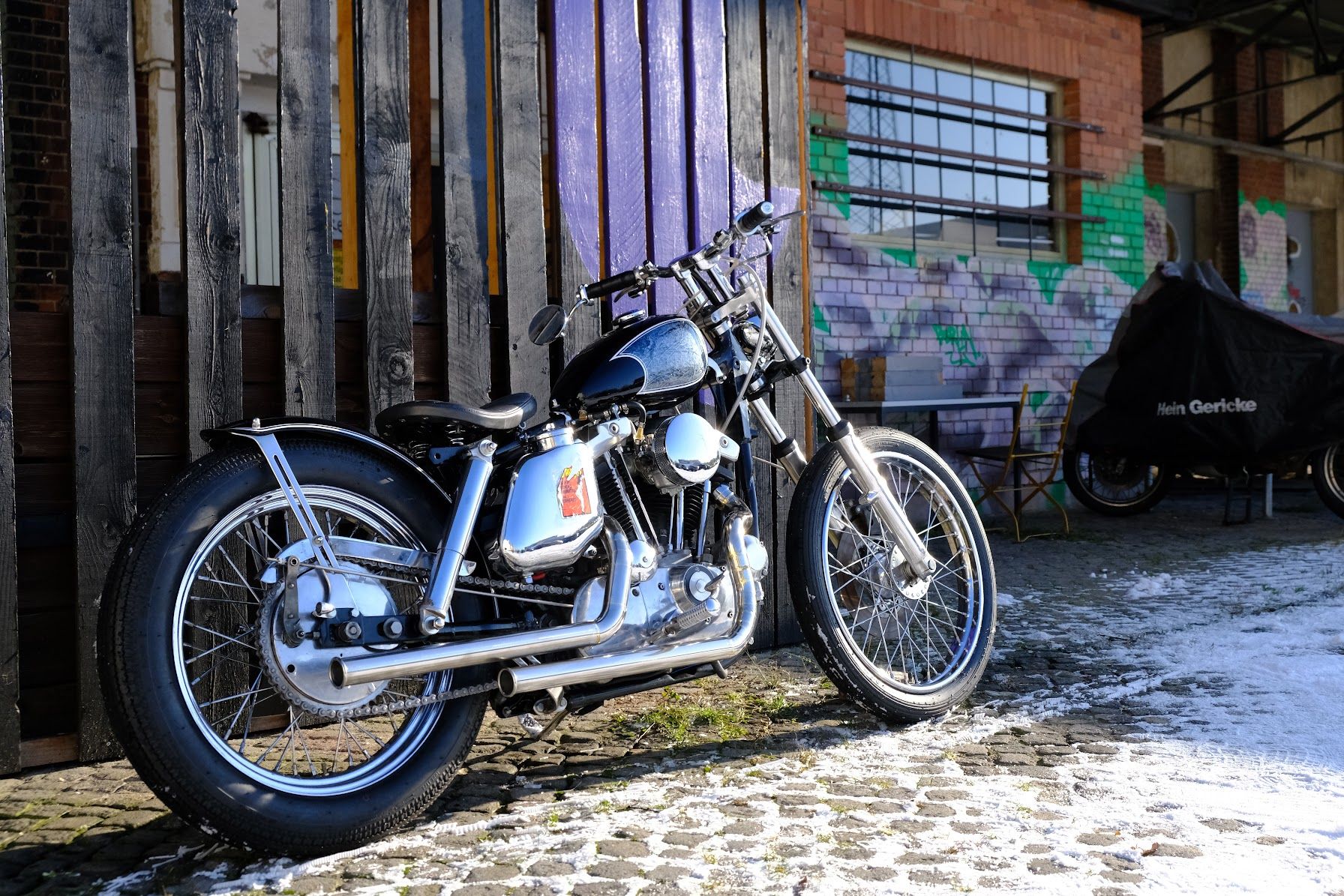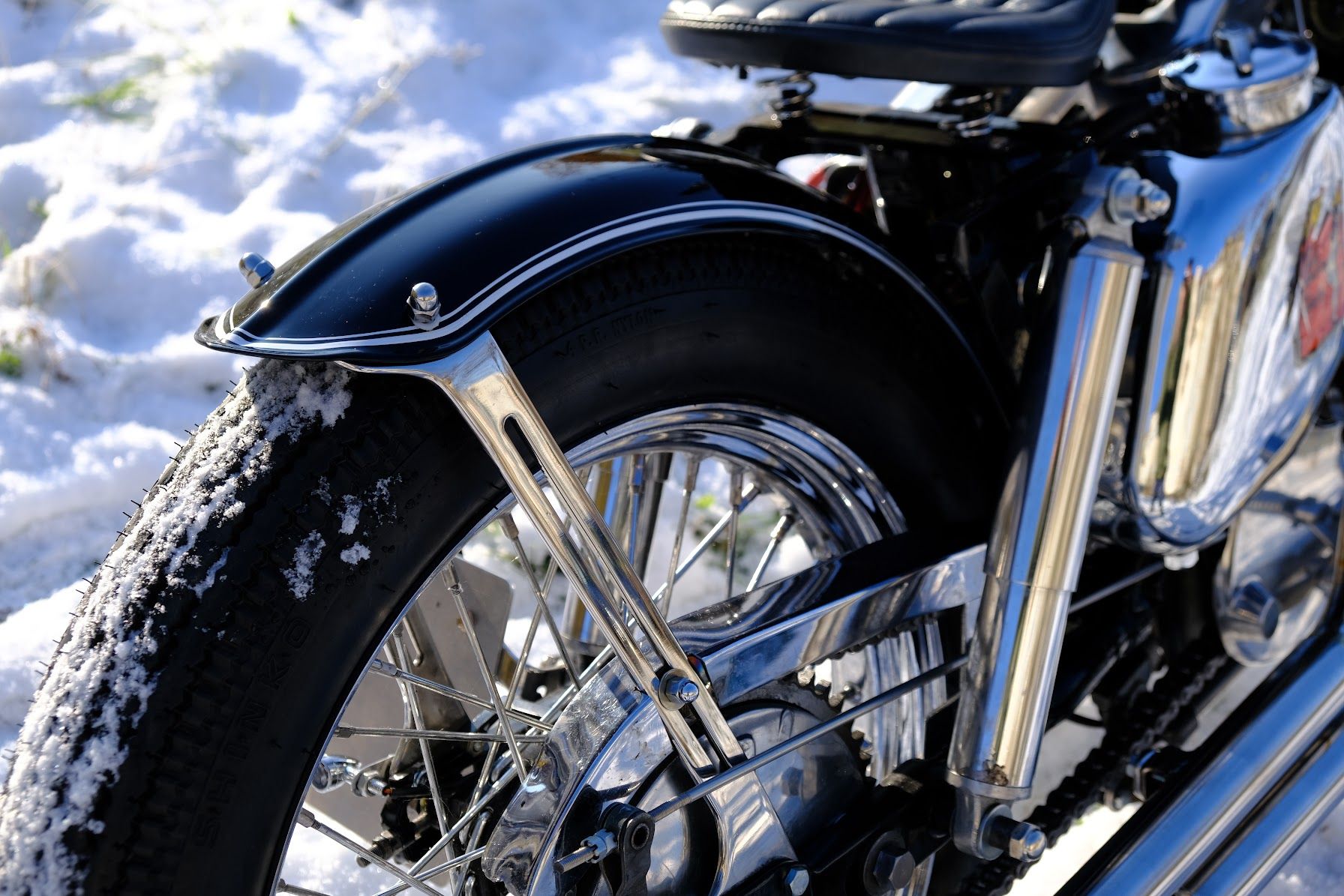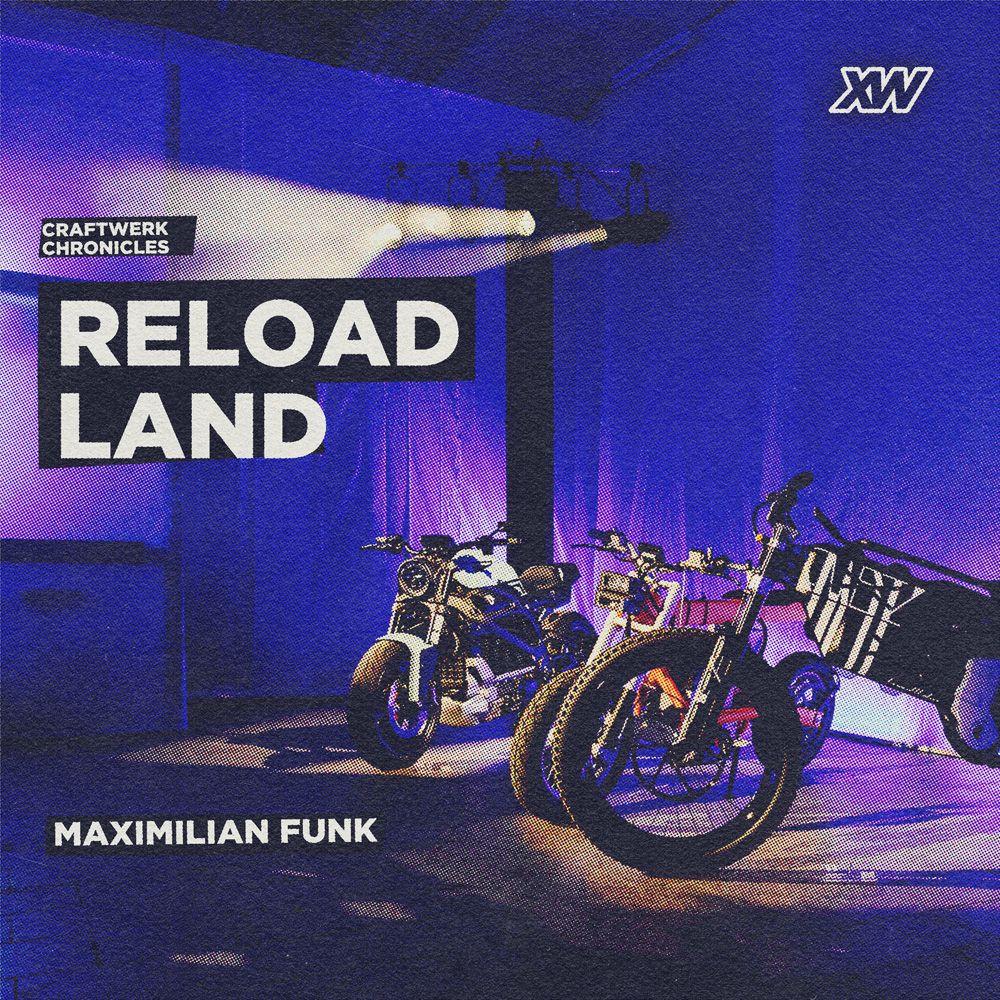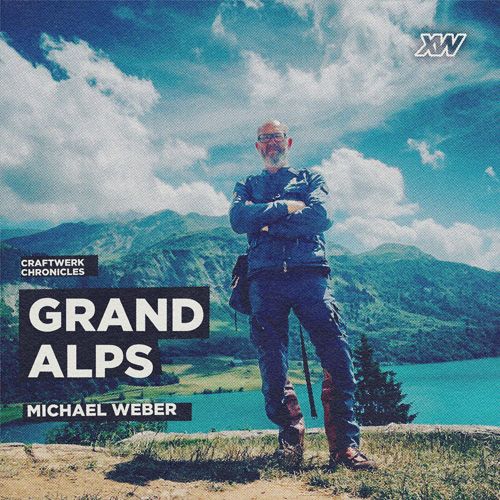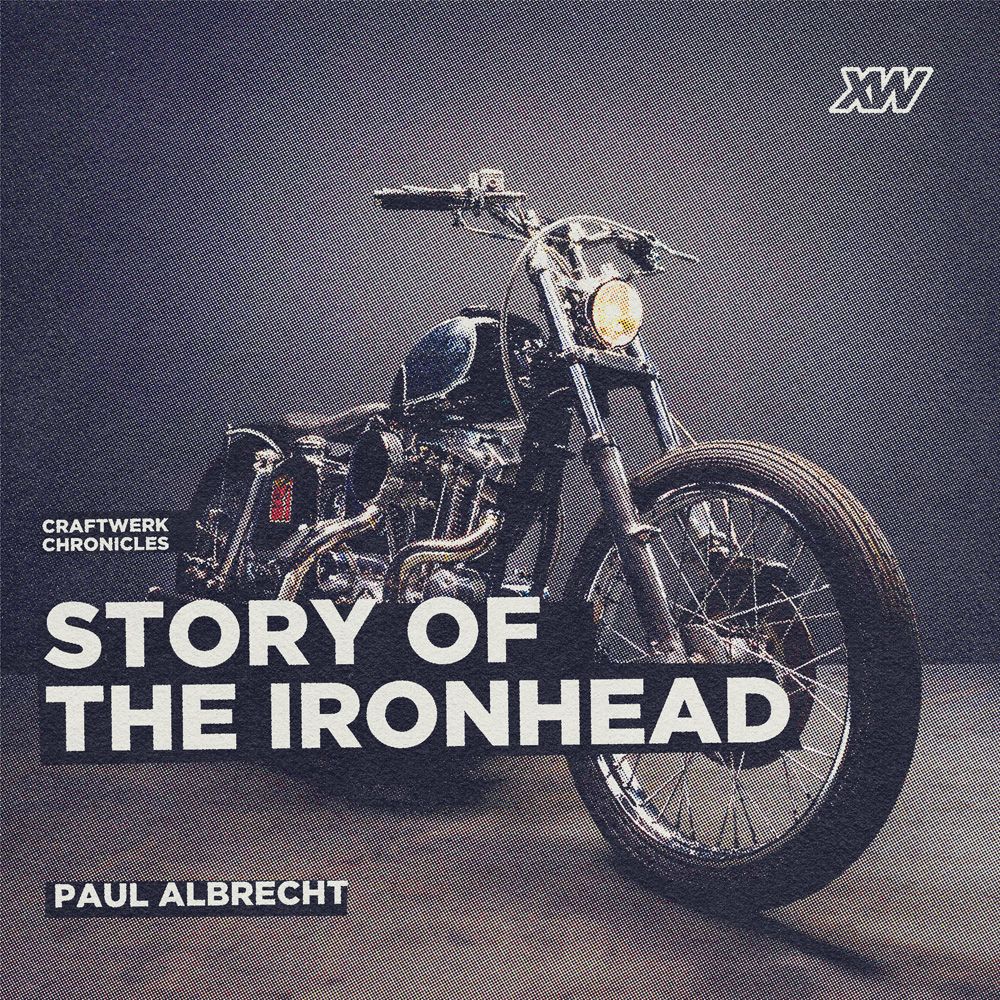CRAFTWERK CHRONICLES
Story of the Ironhead
Paul Albrecht
»You could always turn indefinitely back to where some story really seemed to start. Sometimes it’s just your memory clinging to itself once it gets going. I have decided to start somewhere in the middle, right where you could see it clearly from where we are at now, though not so at the time it was happening.«
Story of the Ironhead
TEXT:
Paul Albrecht
FOTOS:
Patricia Sevilla Ciordia
Paul Albrecht
You could always turn indefinitely back to where some story really seemed to start. Sometimes it’s just your memory clinging to itself once it gets going. I have decided to start somewhere in the middle, right where you could see it clearly from where we are at now, though not so at the time it was happening.
I got into motorcycles in a somewhat natural, undramatic way. I don’t remember a kind of eureka moment when I realized “That’s it, that’s what I want”. The interest slowly grew during my teens, as a visually appealing thing I saw in pictures more than anything, as I did not have access to or owned one until I could afford it some years later.
It slowly came to a point where motorcycles became a very strong interest of mine, and it provided a path out of the city and atmosphere that I was around and felt so suffocating; the enthusiasm killing everyday life you see normally, you know, the I-hate-mondays-and-enjoy-drinking-on-weekends-but-have-no-else-interests thing.
After managing to finish school in my Basque hometown without my head blowing up, I escaped to Stuttgart, Germany, to learn automotive mechatronics at Mercedes, where I spent the next three years as an apprentice. I wanted to learn how these machines worked, and having the opportunity to do so in such a car manufacturer was a big thing. The even better part of it was that I got to spend the afternoons at Dr Mechanik, a very reputable motorcycle customizer that happened to be located in the same city.
I remember knocking at Max Krpanic’s door and asking if I could help around in his shop and learn about his craft after hours. He did not hesitate to show me around the shop right away, and that led to me regularly being in that customizing temple of his. Motorcycles and cars that I had only seen on the internet before were all around the place, the coolest and most bizarre projects I had ever seen: Pontiacs, DeTomassos, Harleys – you name it. I even got to build my first bike there, a XS650 cafe racer. Everything I did to that bike, everything I know about bikes, and everything I learned about getting things done, I owe to the Dr Mechanik duet Max and Micha (the electrics wizard, may he rest in peace).
I learned a ton during that time, not only about building stuff but also about character, about turning it up to 11, about dealing with what has to be dealt with and not quitting, because once you do, it becomes an option. Those years at that workshop remain one of the most humbling and empowering experiences I have had. I am very aware that with them, things are better and will be more so in the future, and I’m forever thankful for that.
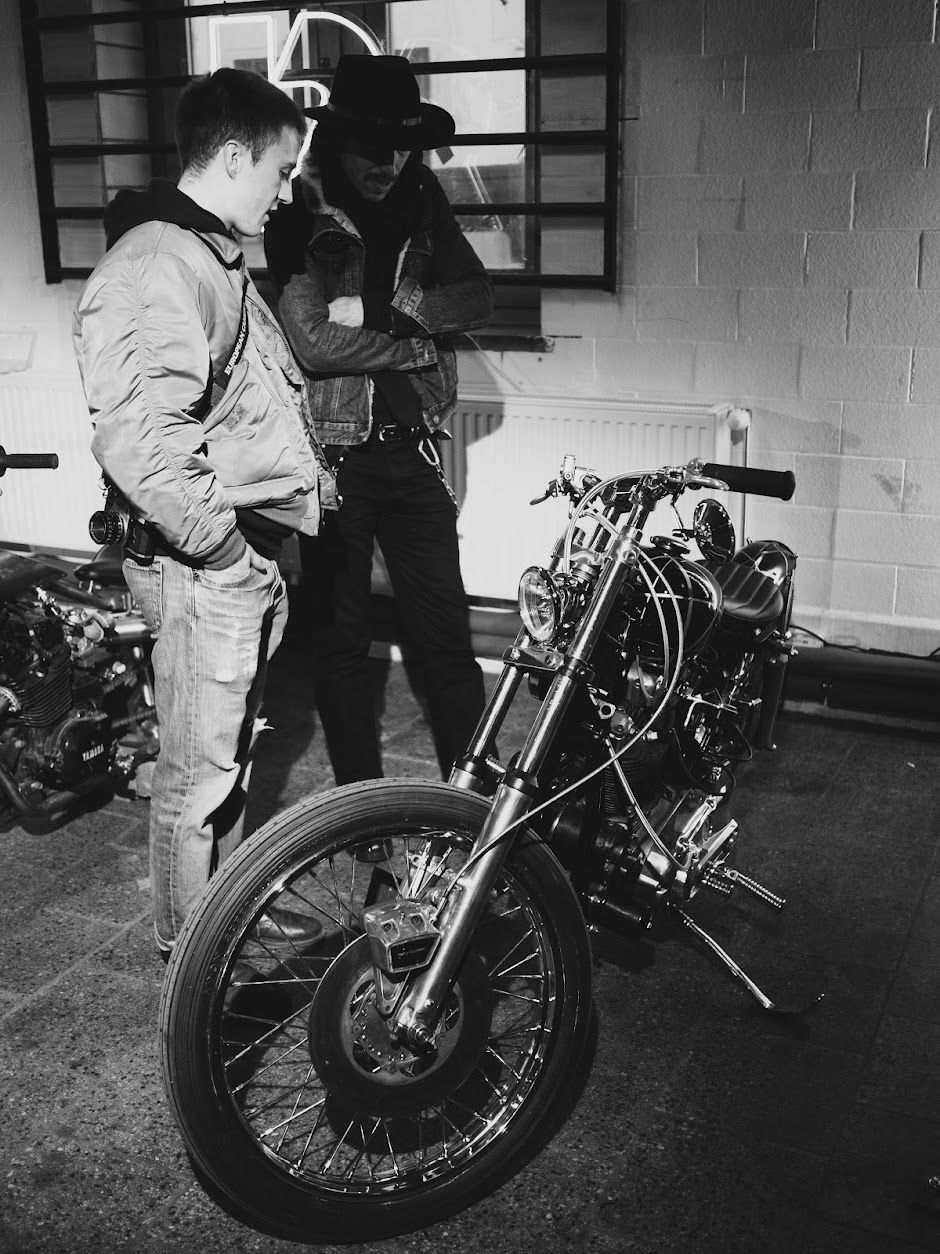

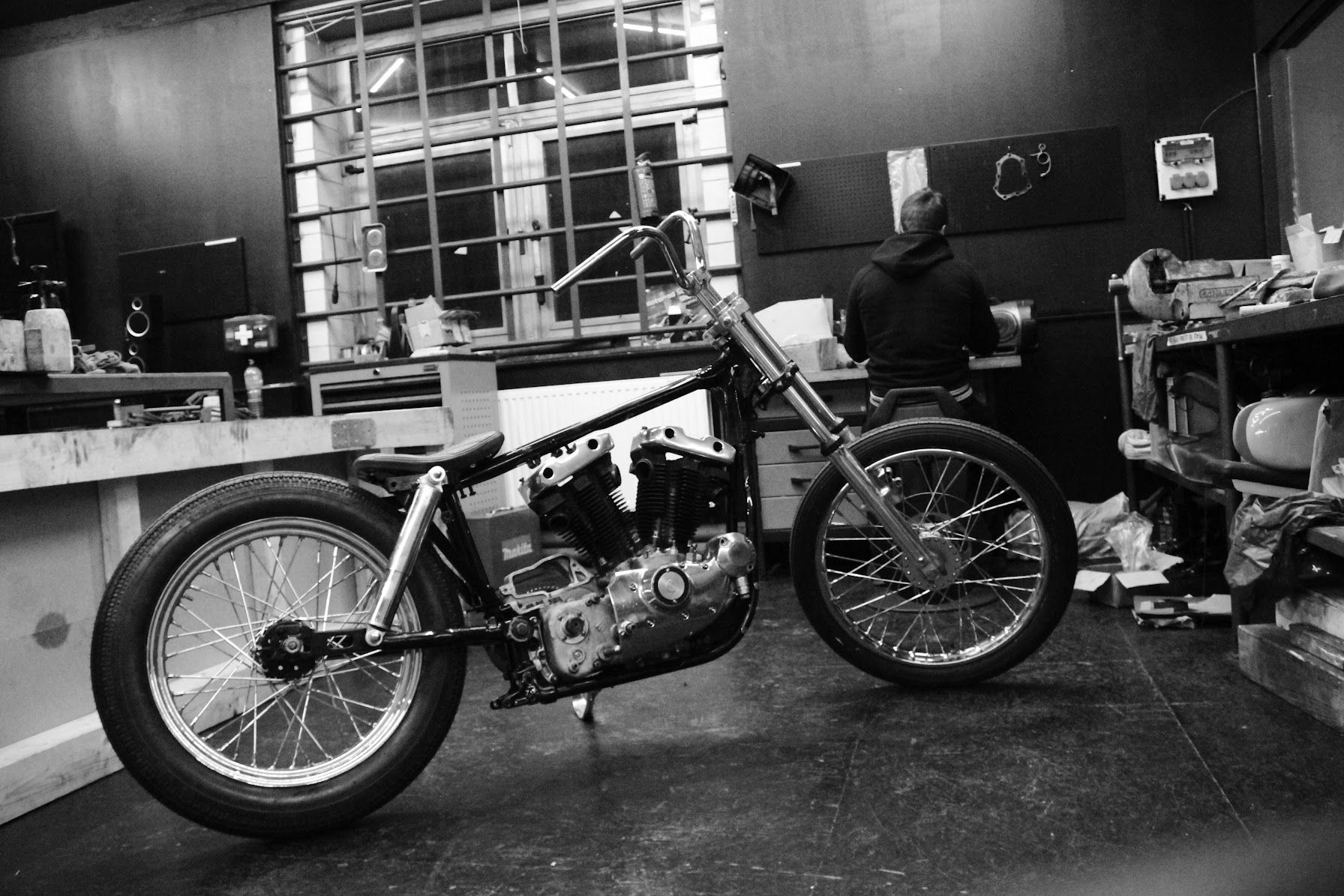
Fast forward a couple years, I was studying industrial design in Berlin when the urge to build another bike started to take over my mind. I had some more money in my pockets, and I wanted to take things up a notch.
Around that time I found an interesting bike for sale, called the guy and a very calm, friendly voice answered on the other side. “You know, you should have some wrenching experience before fiddling with these old bikes … but they’re great machines, good to work on, and very fun … I also have a workshop manual that could help you”.
It was Bernhard Elflein from Herzbube Motorcycles, local chopper guru. The bike was a great basis for what I had in mind, it hadn’t been played around with, was freshly imported from the US and in overall great substance for a very good price.
A 1977 electric start Harley Davidson Ironhead.
Bernhard has helped me a ton when it comes to unavailable vintage Harley knowledge, spare parts and ideas, I’m sure the build would have taken me at least 6 months longer without his knowledge and help, and it definitely wouldn’t have turned out even half as good. He is the godfather of this machine.
I got even luckier when it came to the place I would work on the bike: Craftwerk Berlin. Motorcycle paradise in the most charming old building on the east side of the city. It is hard to explain and, as many pictures as you get to see, this place is truly as special as it gets. The unbelievable work that went into building this community garage can only be felt standing right there.
The atmosphere reflects the dreams of every motorcycle builder and tinkerer, it is as if one was stolen of the idea of what workshop heaven on earth would look like, together with a beautiful showroom, a canteen and the most amazing people you could imagine – both the Craftwerk crew and the members – everyone ready to help each other and celebrate our little accomplishments.
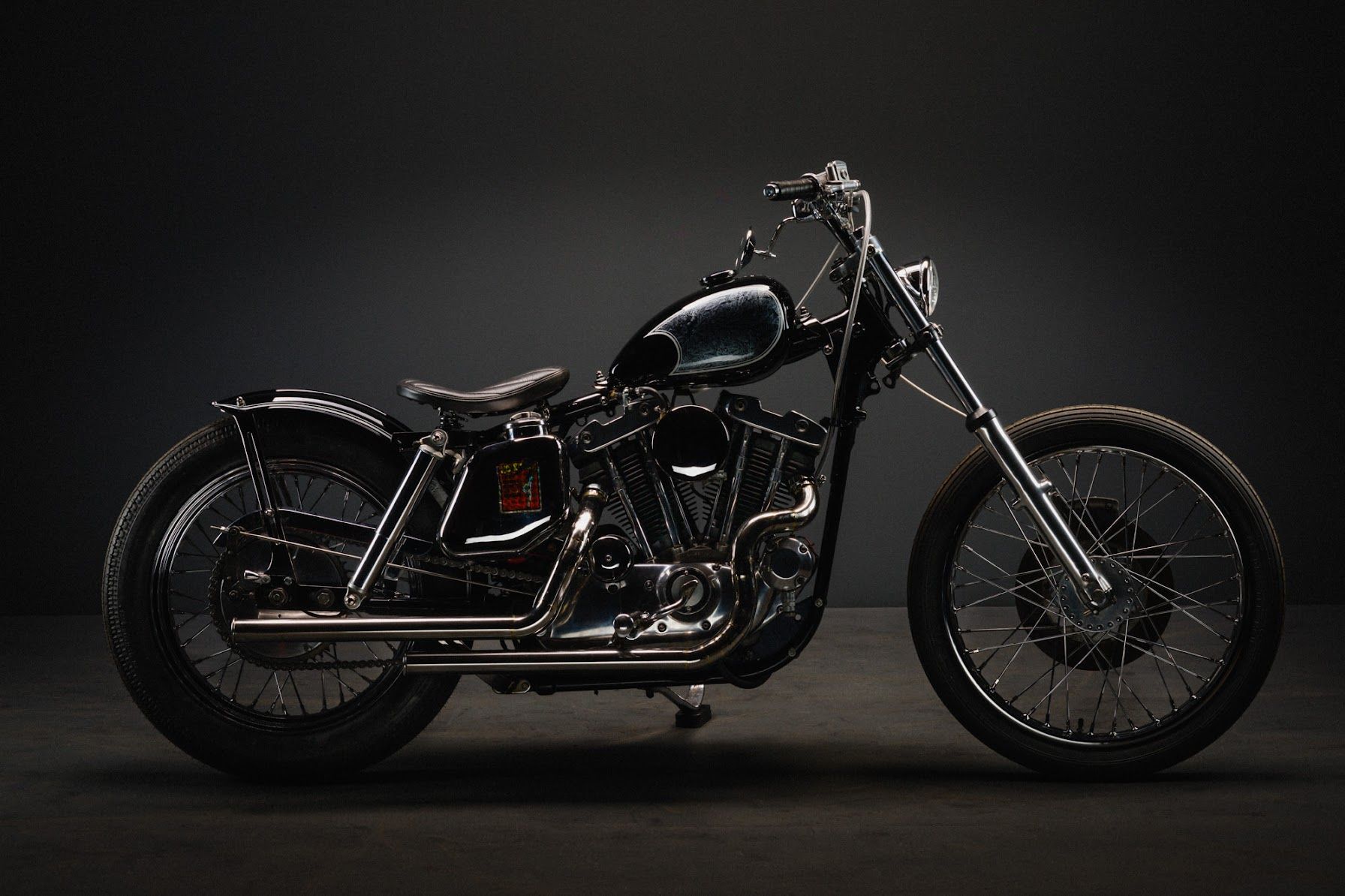
I started working on the Harley Sportster in summer 2022, when happiness floats in the Berlin air and a T-shirt is the way to go everyday.
I got the bike running first, not without difficulties, as the last guy to touch it made a mess out of the ignition and spelled a mystery to solve that took me a while to find out. I guess that was the reason why it was left standing with not much miles on it. But once it was purring, it was time to completely take it apart. I took the frame and swingarm to powdercoat, and started rebuilding the wheels and forks.
The original 16 inch rear and 19 inch front rims were replaced with a now 19 inch rear with a 21 front I relaced with chrome spokes, following the idea of keeping the bike skinny. I shaved down the forks – eliminating that big ugly reflector casting they originally have – and polished the legs. Rebuilding the rolling chassis did take some time, and next came the engine. I had worked on engines before, but this was my first time rebuilding one on my own. I was positively surprised that the bike still had the first piston set and not too much wear, indicating that the low mileage on the odometer was correct.
I got new pistons (original ones Bernhard had, as I said, he was extremely helpful with sourcing parts, whatever it was), rings, valves and took the cylinders and the heads to get honed and valve seats grinded to an old school machine shop in the outskirts of the city. I took my time rebuilding the engine, re-reading the manual and checking everything twice, and polishing all aluminum covers. We laugh about it now at Craftwerk, because for a time polishing parts was all I did with my life.

The practice is now locally known as “Paulishing”.
Then slowly came everything else: the peanut tank, the handlebars, all the stainless parts (exhaust, fender struts, many holders…). It was my first time doing many of these things, and there were plenty of tries for almost everything. Brazing the self made exhaust was the most time consuming thing, as I even had to learn to braze in the first place. The parts I made became more and more, and the machine started to come to life, slowly but surely.
The intense sprint happened during the last weeks before the Custom Award, the yearly custom motorcycle award Craftwerk celebrates in house. The machines built through the cold winter by backyard builders and experts are shown there in spring and judged by a jury, this year consisting of Axel Budde (›KAFFEEMASCHINE – ride unfiltered – Unique café racers), Jens vom Brauck (›JvB motorcycle design) and Alexandra Lier (›ALEXANDRA LIER).
I went like crazy trying to get as far as I could for the show, still working on the bike around 5:00 am on the same day. I did not manage to finish the whole thing: there was no electrics, the rear brake was not connected … And then it happened. Without knowing what to expect and what other people may think of the stuff I do, the little Ironhead landed 1st place with a cheering crowd (especially Jamie, Craftwerk member and motivating wrenching companion along the winter ) and myself that could not believe it. Not gonna lie, it was one hell of a day for me.
It makes you really happy to do great with things you care about and are able to share with people in such a way. It is a very meaningful thing, and a powerful driving force. The next months were spent finishing and getting the bike to the place I wanted to in my mind. Following that long heard Dr. Mechanik ethos, you know, turning it up to 11 when you have to … I worked on the details and gave the tank and fender to Sven Bluhme from ›HotRodPaintShop to paint them how I never could and only he can, and what a great job he did. Then Patricia Sevilla – Craftwerk house photographer (›PATRICIA SEVILLA CIORDIA – made her magic: the beautiful photography you see here.
I have realized how important community is – doesn’t matter what you are into, or what you work on – in how many different ways we can help each other, and that all this would not have been possible without every single person I mentioned and many more I haven’t, each supporting in their own way: with a helping hand, clever idea or a good laugh. All while having a damn good time along the way. It for sure has been a beautiful experience, and a great reason to keep walking the way, because this ain’t the last bike I’m building … The show must go on!
